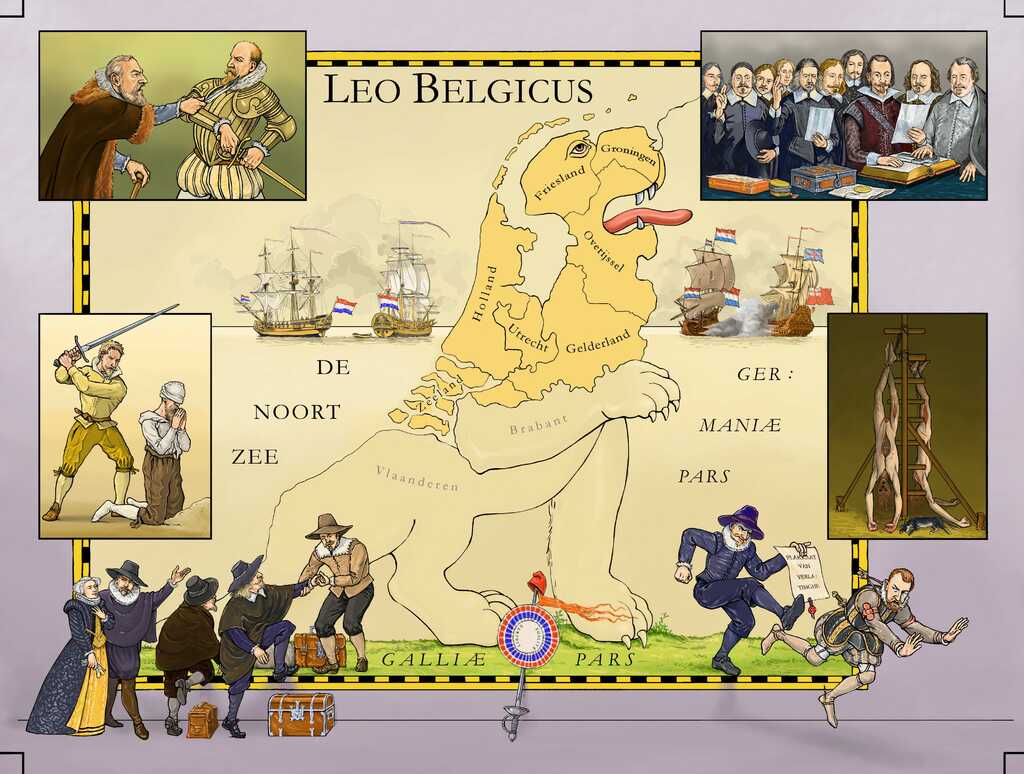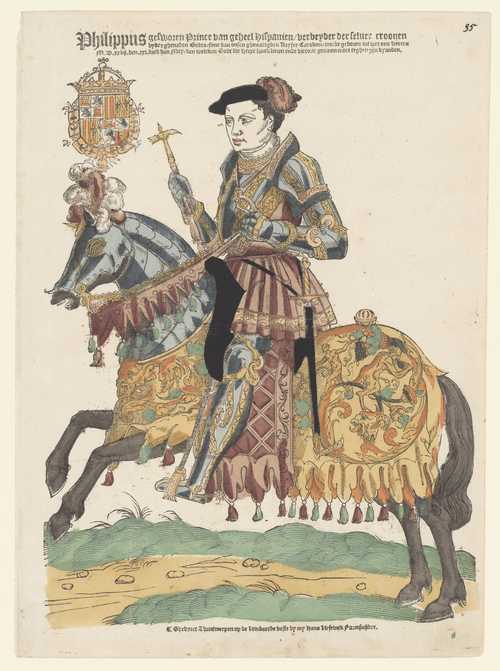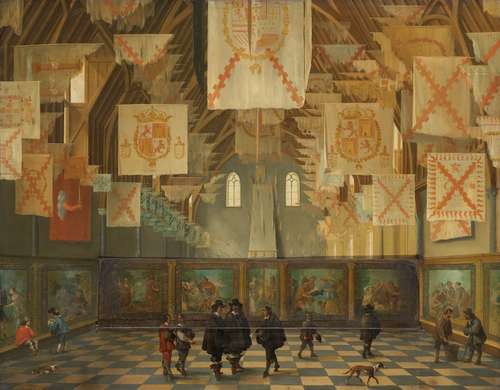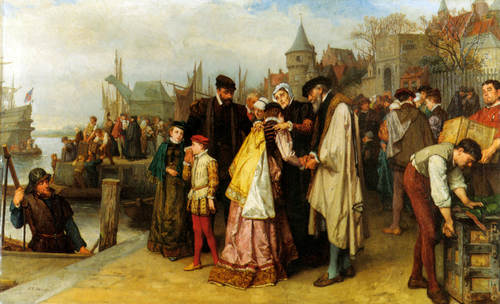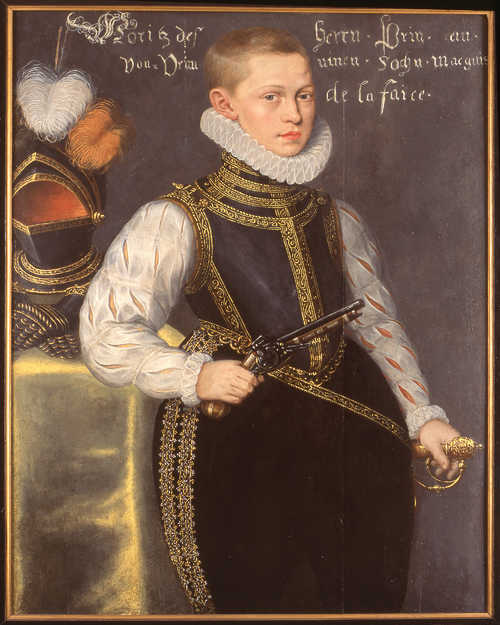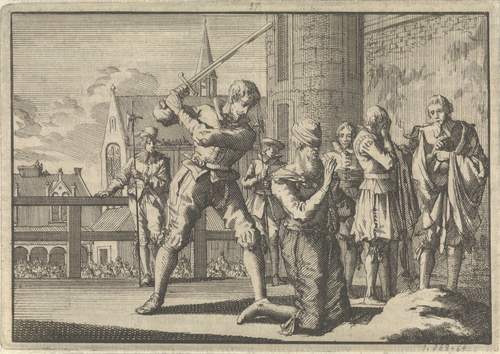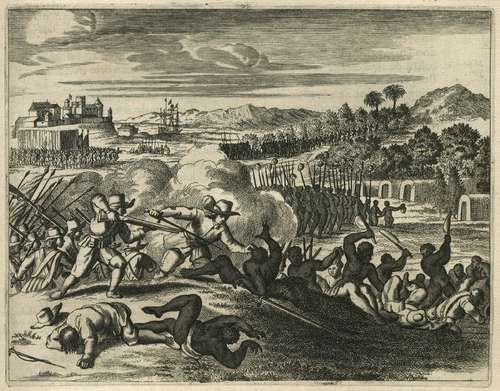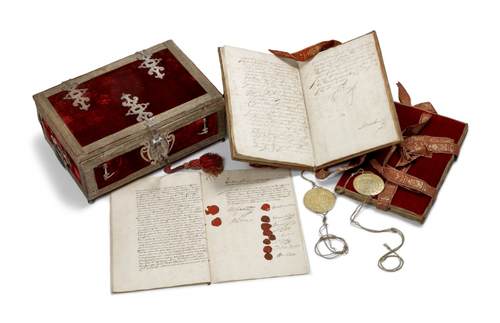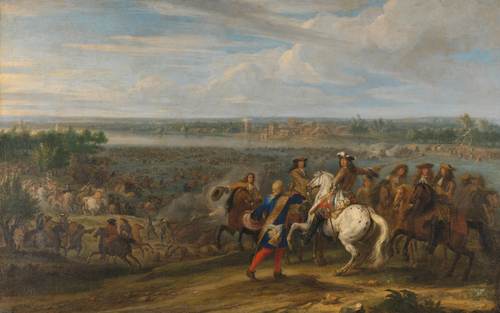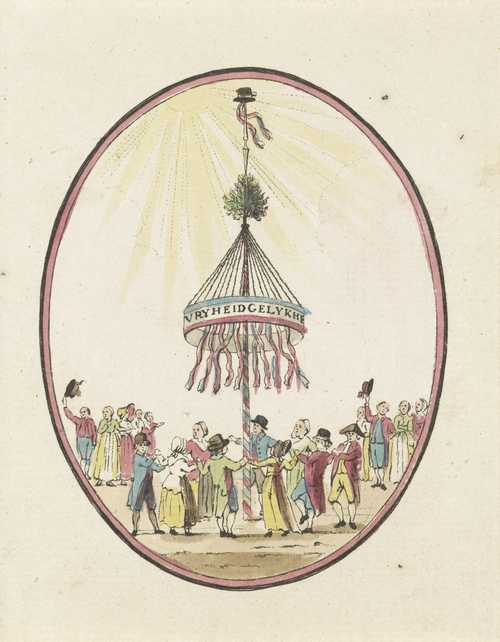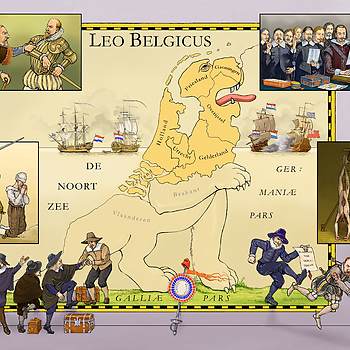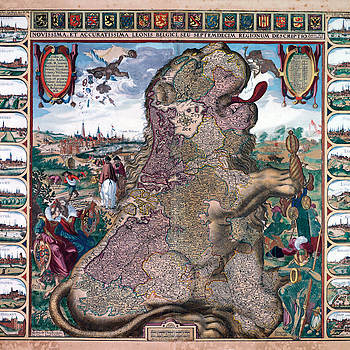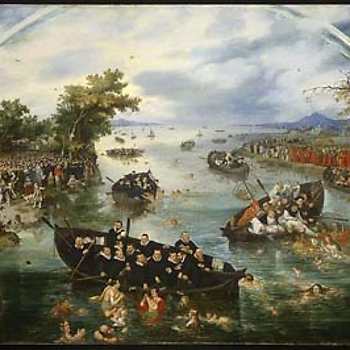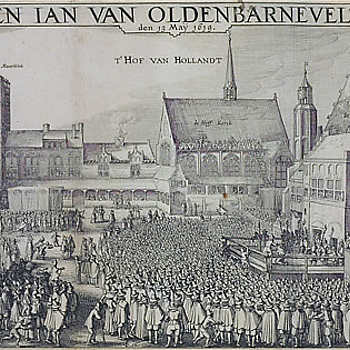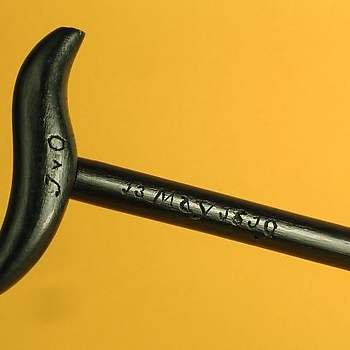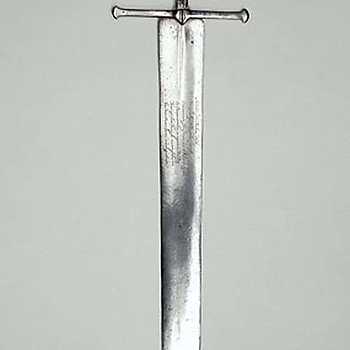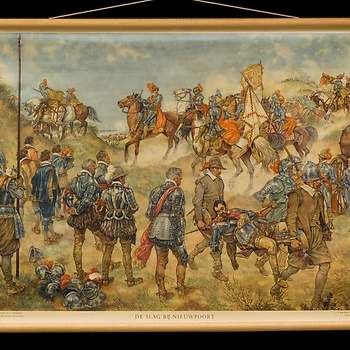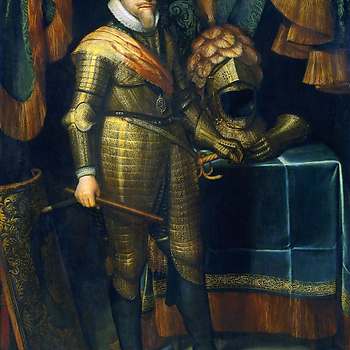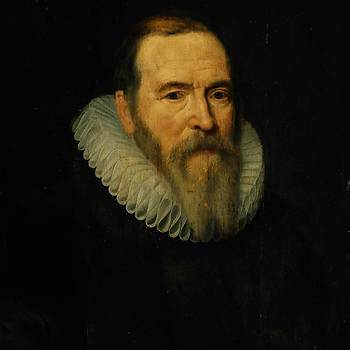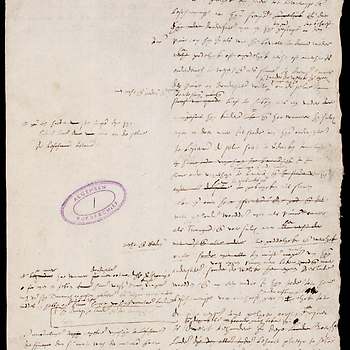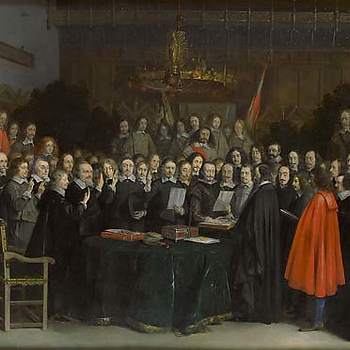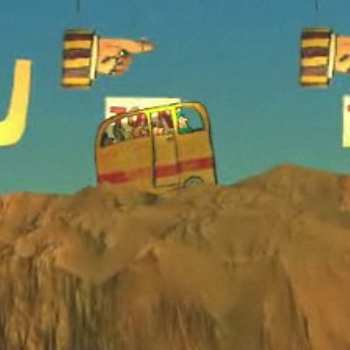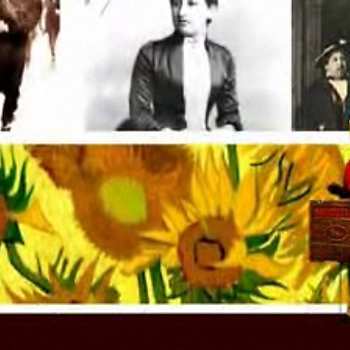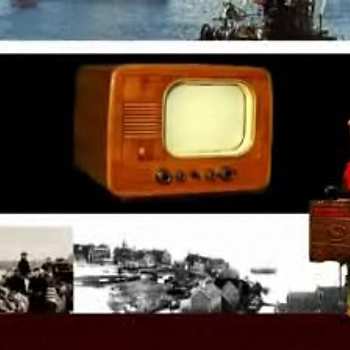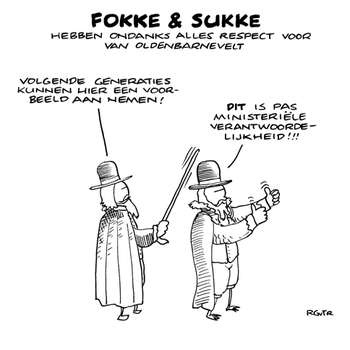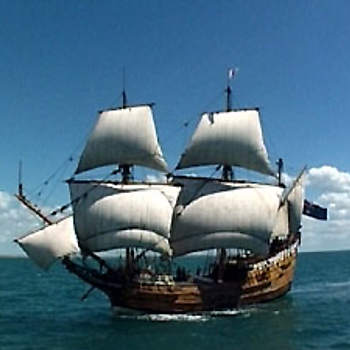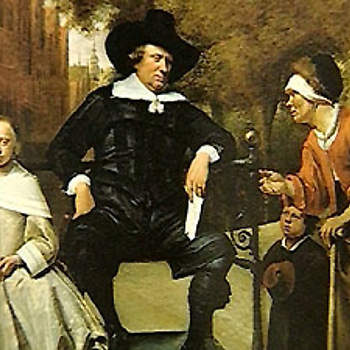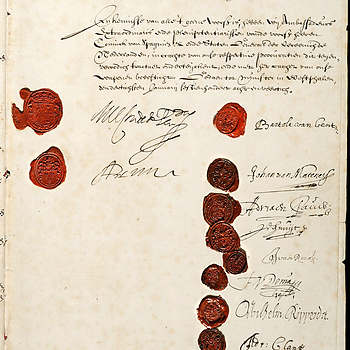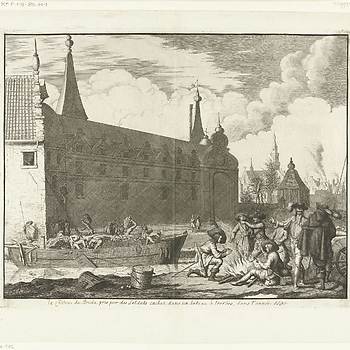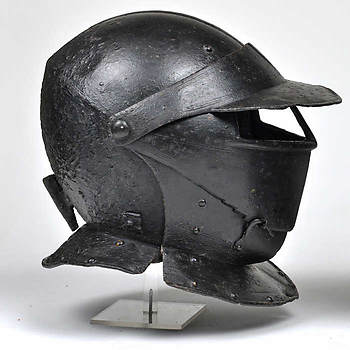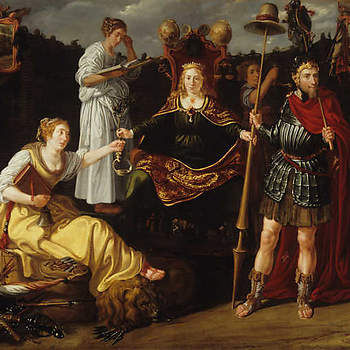In 1609, the Twelve Year Truce resulted in a temporary cessation of the war with Spain that had begun in 1568 with the military attacks of William of Orange. To commemorate the occasion, Claes Janszoon Visscher produced a map of the Low Countries in the shape of a lion, the Leo Belgicus. The map depicts the seventeen low countries as a unity, existing peacefully side by side thanks to the silencing of the guns, symbolised by the sleeping figure of Mars at the bottom right. In truth, however, the Low Countries had been split into two states by the Rebellion and the subsequent war: the southern, Spanish Low Countries and the northern Republic of the Seven United Low Countries. The latter had recorded a diplomatic success with the Truce even though international recognition as a sovereign state would only come in 1648 with the signing of the Treaty of Westphalia in Munster.
Republics were the exception to the rule in early-modern Europe where princes set the tone. Therefore, none of the rebels had actually been aiming to establish a republic: they had simply wanted to bring back “the good old days” when princes had guaranteed the freedoms and privileges of towns, provinces and subjects. Such a prince had been sought after the renunciation of Philip II, but had not been found. For this reason, in 1588 the seven remaining rebellious provinces took the form of a republic.
This resulted in a remarkable system of government in which, in theory, each province had an equal voice in the general meetings of the States General. Members had the right of consultation. This meant that delegates had to return to their provinces for consultation. Consequently, it could take along time for decisions to be made. In practice the system was not too bad. Given that the wealthy province of Holland provided the most revenue, it also had the greatest say. The highest official of Holland, the Grand Pensionary, had duties similar to President of the Republic, Minister of Finance and Minister of Foreign Affairs all rolled into one. In addition, a member of the House of Orange usually held the office of Stadholder (governor). The Dutch term literally means “deputy” or “replacement”, but this was now simply a reference to early times: after all, there was now no liege lord who had to be replaced. As a high nobleman from the House of Oranje-Nassau (and therefore a descendant of William of Orange) and commander of the armed forces, the Stadholder was positioned well above all other administrators and officials. Whereas such civil servants spent their time largely in meetings, Stadholders like Maurice and Frederik Hendrik recorded military successes against the Spanish. They had something of the air of a prince about them even though they were officially simply servants of the County Council.
The Stadholder and Grand Pensionary could easily come into conflict with one another. During the Twelve Year Truce, this happened for the first time, with a dramatic outcome. After a heated political and religious conflict, Stadholder Maurice had Johan van Oldenbarnevelt arrested on the charge of high treason. Oldenbarnevelt was sent to the block on 13 May 1619.
